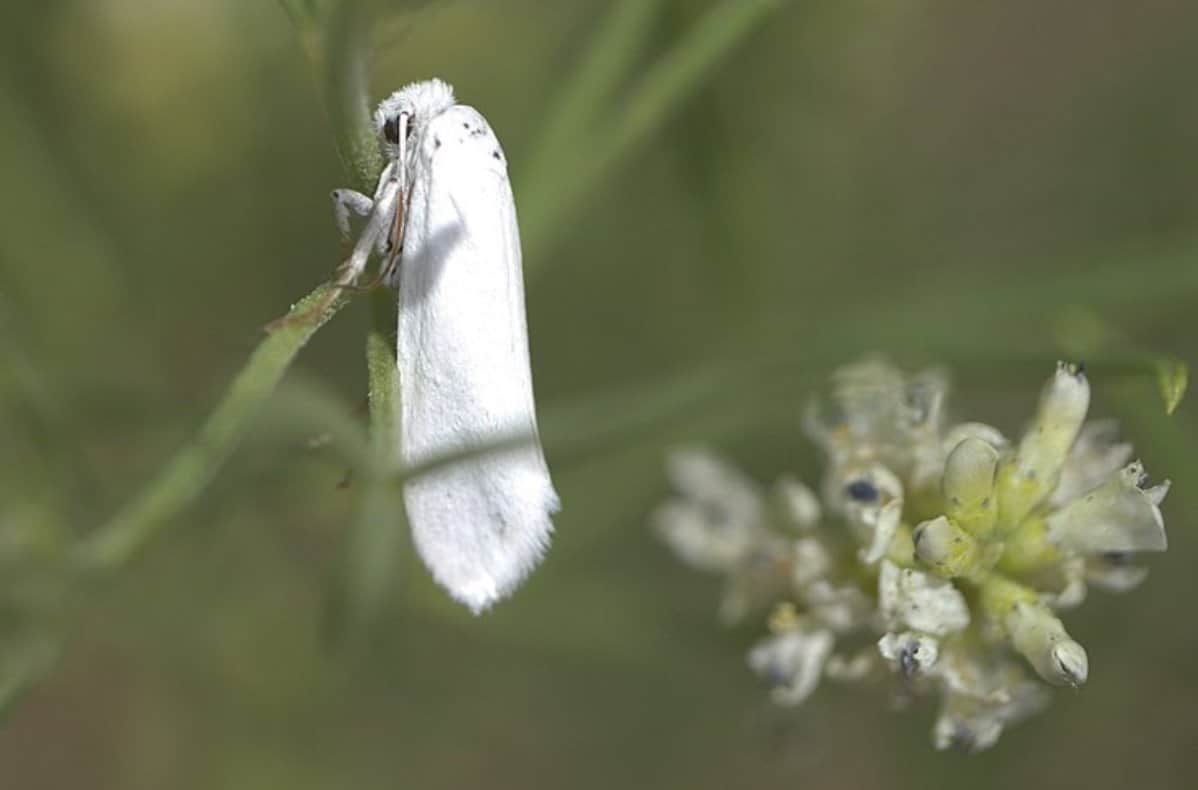The yucca moth is a one plant insect, that is caught in the past and future of yuccas. Female yucca moths have shown signs of adaptation to ensure yucca pollination.
Yucca Moths are plain white moths that spend most of their time near yucca plants. Ranging from four millimeters to 30 centimeters, yucca moths are tasked with a significant role in the yucca plant’s life cycle, pollination.
This article will discuss yucca moths and many of their unique characteristics. We will also discuss their co-dependency with the yucca plant.
Yucca Moths Pollinate Yuccas
The yucca moth is the only pollinator that can pollinate a yucca, and in return, the yucca plants provide food for the moth’s larvae. Their larvae are round red, pink colored caterpillars with no patterns, who eat some of the seeds produced by the flower.
Yucca moths are native to the southeast of the United States and Mexico but have been found in the north and east of America. Yucca moths can be found if there are yucca plants.
Without the yucca plant, the moth cannot reproduce and feed its larvae. And without the yucca moth, the yucca plant cannot propagate.
Yucca Moth Life Cycle
A female yucca moth will mate in the spring, which ends the male’s cycle. The majority of a yucca moth’s life is as a larva.
Female yuccas collect pollen with their tentacles, a feature special to yucca moths. The tentacles are used to scrape glutinous pollen from male yucca flowers. Then, she will pack the pollen in a ball and stick the pollen to her head. Once she has collected enough, she will fly to another flower.
The female yucca moth will locate a yucca blossom that another female yucca moth has not used. Once she finds a blossom, she will lay four or five eggs. Laying eggs where another yucca moth has already laid eggs is uncommon due to limited food.
Using the pollen the female yucca moth has collected, she will deposit the pollen onto a yucca’s stigma. This fertilization of the blossom leads to seeds being produced for the larvae to eat. Yucca moths live for a short time and don’t require food.
The larvae will hatch in the late spring and summer to eat about 200 seeds from the yucca plant. It is unknown how the larvae know when to quit eating. But they do leave enough seeds for the yucca plant to propagate.
As winter approaches, the yucca larvae will move into the soil to cocoon. In the spring, the yucca larvae will become a yucca moth. At this point it leaves the cocoon and prepares to mate.
What Do Yucca Moths Look Like?
Yucca Moths are a small, fluffy looking moth with white wings and light brown bodies that match the yucca blossom. They have six brown legs and two antennae that fade from white to brown. Various yucca moths have small dark spots on their wings that match the color of their dark eyes.
Both female and male yucca moths have tentacles by their mouths, but females use theirs for pollen collection.
Why is it Called a Yucca Moth?
Yucca Moths are named after the yucca plant. The yucca plant is their larvae’s only food source. The yucca moth, scientific name, Tegeticula Yuccasella, is a part of the Prodoxidae family of moths.
Where are the Yucca Moths Found?
Yucca moths tend to be found where yucca plants are native. Yucca plants are native to the southwest of the U.S. and Mexico. Over time, the yucca plant has been found in the northern and eastern parts of the U.S. Yucca plants can be found all over the world, but without the yucca moth the yucca plant will not produce seeds.
When are Yucca Moths Active?
Yucca moths are more active at night. They are lured to the yucca by the fragrant blossoms the yucca produces at night. The yucca moth spends its days on yucca plants and evenings mating, pollinating, or laying eggs.
Yucca moths have been interacting with yucca plants for more than 40 million years. The yucca moth is one of the oldest moth species. There has been some speculation that yucca moths are endangered due to habitat loss and a decrease in yucca plants.
Hey, read this one too: What Pollinates a Yucca Plant
Conclusion
Yucca moths are small white moths with a special relationship with yucca plants that ensure both can survive and reproduce. Using tentacles, they collect pollen to fertilize a yucca blossom to provide for their larvae.
Feature photo provided by Robert Webster / xpda.com on Wikipedia


